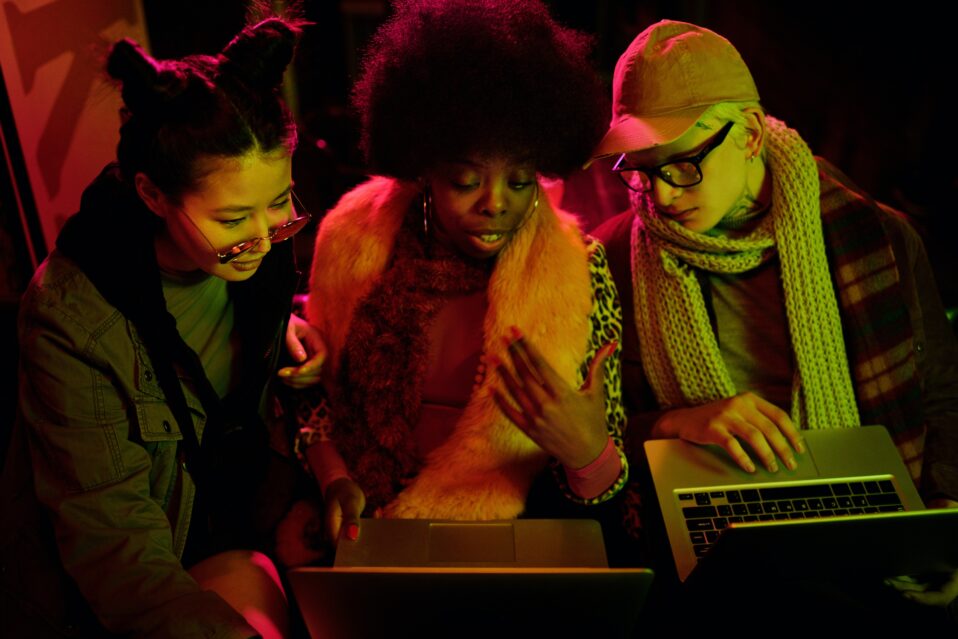
Beginning in 2018, the Annenberg Inclusion Initiative has kept track of the artists and creators responsible for the most popular musical works. Repeatedly, it has discovered that “women are far outnumbered by men…[and] people of color have made up about 47 percent of the credited artists behind 900 top pop songs since 2012.”
However, the power structure in the music industry—namely, the executives who make the decisions—saw less than 20% of its ranks coming from underrepresented racial and ethnic groups.
In the UK-based Donne Foundation’s international sampling of orchestra concerts, Equity in the Concert Halls: 2020–21, it was found that only 5% of programmed pieces were composed by women, and 3.54% of works were written by Black and Asian composers.
The screen-based industries have a much bleaker outlook: A Screen Composers Guild of Canada (SCGC) study found that, while 15% of screen composers in Canada are women, only 5% of the publicly funded audiovisual productions analyzed hired a woman composer. Bleaker still, research shows that women make up less than 3% of all film composers, and that composers of colour are almost entirely absent from Hollywood productions.
In a world that provides access to a seemingly infinite amount of content, it is vital for each society’s cultural products to reflect the diversity of the communities they represent, and that the people who tell these stories are given the opportunity to do so. In Canada, we are falling short.
What Are Diversity, Equity & Inclusion (DEI)?
“Diversity,” “equity,” and “inclusion” are often used to describe initiatives that target inequities in the places where we work and live. The University of Washington’s Office of Research defines each term as follows:
- “Diversity is the presence of differences that enrich our workplace. Some examples of diversity may include race, gender, religion, sexual orientation, ethnicity, nationality, socioeconomic status, language, (dis)ability, age, religious commitment, or political perspective in our workplace. There are many more.
- “Equity is ensuring that access, resources, and opportunities are provided for all to succeed and grow, especially for those who are underrepresented and have been historically disadvantaged.
- “Inclusion is a workplace culture that is welcoming to all people regardless of race, ethnicity, sex, gender identity, age, abilities, and religion and everyone is valued, respected and able to reach their full potential.”
What Does It Mean to Be, or Aspire to Be, an Ally?
The Canadian Centre for Diversity and Inclusion provides the following definition of an “ally”:
- “Rooted in the term ‘alliance’, an ally is an individual in a position of privilege or power who makes consistent efforts to understand, uplift, empower, and support equity deserving groups. An ally is not a member of the group, but seeks to stand in solidarity with an equity deserving group to end oppression, discrimination and/or prejudice.”
What Are Generally Inclusive Practices?
Crucial to understanding diversity, equity, and inclusion is understanding that everybody’s path to success looks different. Underrepresented groups, specifically, face challenges that may not be readily relatable or even identifiable to those who don’t face similar situations.
Questions that organizations and those who aim to be allies can put forward include:
- Do the people we highlight represent a widely diverse group of people?
- Do people have equal opportunity to participate in and benefit from the programs we are offering?
- Do people feel welcome in the community we’ve created, and do they feel empowered to reach their fullest potential?
For example, DEI from an educational standpoint could begin with ensuring access to both experiential and academic learning opportunities—from exposing all kids to music creation at an early age, to formalized mentorships and internships with successful role models, both from within and beyond underrepresented communities. It could mean blind application and audition processes, and adopting meaningful diversity and representation, beyond tokenism.
Those who support DEI and aim to be allies can help push organizations and institutions to adopt coherent diversity policies, ensuring that their faculties and invited guests represent the diversity of the greater community, but also putting practices in place to prevent implicit biases in their admission processes.
The important thing to realize is that no one person or organization will have all the answers—nobody has them. Organizations and institutions are trying to pivot from what have generally been reactive policies to proactive ones. While mistakes will be made, there is some hope that Canadian cultural industries are starting to acknowledge their deficiencies and attempting to address them.
